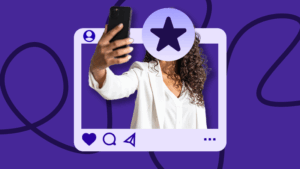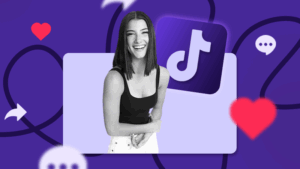How To Collaborate With YouTubers To Promote Your Brand
After bouncing around tech start-ups and university literature programs, Joe has finally settled down as Billo’s Head of Content. Joe now spends his days writing ads about ads, teaching clients how to craft killer content, and combing through our web copy with a bold red Sharpie.
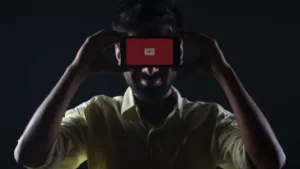
I’m going to tell you a marketing secret: Most companies don’t know how to collaborate with YouTubers.
They treat this marketing as hiring an actor to play a specific role in an advertisement, complete with using exact footage and terminology at various points in the video.
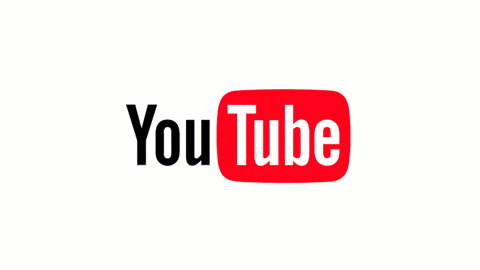
The problem with this style is that it’s incredibly obvious to the viewers, and especially so when it deviates from the YouTuber’s personality. The result is marketing that severely underperforms what it could be doing, but companies keep at it because they don’t know how to do anything better.
Let’s talk about how to successfully collaborate with YouTubers.
What Is Influencer Marketing?
Influencer marketing is the process of using a notable public figure to promote a product or service. This is functionally an application of word-of-mouth advertising, which a majority of top company executives believe is a valuable strategy, even more so than traditional brand marketing.
Here’s the thing: Many companies focus on collecting an audience, which means getting more followers and more eyeballs.
That’s not the same as connecting with an audience, which is what drives sales.
YouTubers’ fans often connect with the person they’re following. There’s a level of personal interaction and engagement, even with the larger channels, that isn’t present with other forms of celebrity marketing.
These fans genuinely care what the YouTuber thinks, so if they see their idol just going through the motions, they won’t trust the marketing.
Some people laugh at influencer marketing because they don’t recognize its potential. Other people laugh at it because it’s hard to hit the sweet spot with this marketing. The ideal point for a YouTuber is having enough followers to be valuable, but also enough engagement with those followers to see a good return on the investment.
Most YouTubers fall into one of two categories, based on the content they create.
- “Real” YouTubers are people who (usually) show their faces and reveal their actual identity. A real YouTuber could be a famous graphic designer showcasing their work.
- Virtual YouTubers use digital avatars and typically play a character on screen.
Both real and virtual YouTubers are viable for promoting your brand. The important thing is whether their channel’s audience matches what you’re trying to do for promotion. If you ignore or dismiss either group, you could end up losing out on valuable marketing opportunities.
What Is A Sponsorship?
Sponsorship marketing is when YouTubers get paid to promote specific products. This can take several forms, from displaying the product on-screen to outright discussing the product for several minutes.
The most effective forms of sponsorship marketing usually tie into what a channel is discussing. For example, the YouTube channel Overly Sarcastic Productions discusses history and writing tropes (specific elements of writing often found in stories).
They have a frequent sponsor in World Anvil, a service that helps writers create and record information about fictional worlds.
This sponsorship works because it’s relevant to the viewers’ interests. Rather than advertising on general channels, World Anvil specifically chose this channel because many viewers are interested in both history and writing and want to do some of that themselves.
Let’s talk a little more in-depth about how sponsorships work in practice. In the Summer of 2021, Taco Bell released their Fry Force commercial, an over-the-top cartoon parody advertising their nacho fries product. At 30 seconds in, the commercial had an appearance from the virtual YouTuber and content creator Gawr Gura.
This wasn’t a highlight of the video – it was a blink-and-miss-it cameo without so much as a spoken line of dialogue.
However, this particular YouTuber has several million followers, many of whom enthusiastically engage with her content. They spotted the cameo and, just as Taco Bell planned, immediately started talking about it with the rest of their community.
Gura later discussed the sponsorship with her community, serving as a much more natural form of advertising than just saying “this video was sponsored by Taco Bell”. Honest and straightforward discussions tend to work better than overly stilted marketing.
Why did they go so far for this? It’s simple. Nacho Fries has been one of Taco Bell’s best-selling products ever.
There’s a big market for them, and the more buzz they can create, the better their sales are. Taco Bell identified a community and successfully generated a lot of buzz for almost no extra work on their part.
Sponsorship vs. Affiliate Marketing vs. Brand Ambassador
Sponsorships are when YouTubers get paid a set amount to promote a product, usually done on a per-video basis.
The company defines what they want the sponsorship to be (number of mentions, etc.), and the YouTuber gets paid for that.
- Sponsorships can also involve appearing in other places, such as Gura appearing in the Fry Force commercial we discussed above. Sponsorships are usually set payments, so the success or failure of the advertising doesn’t affect the rate much.
- Affiliate marketing is similar to sponsorships but involves more direct selling. In these cases, the YouTuber doesn’t get a set fee for the ad. Instead, they get a percentage of every sale. This is essentially the same thing as commission-based selling, but people who get commissions usually work directly for a company, whereas affiliate marketers are independent.
- Brand ambassadors work similarly to sponsorships, but there’s usually a lot more hands-on engagement. This is a mixture of hyping the product, showcasing different features, and even testing the product in front of the camera.
Ambassadors generally aim to showcase brand values, integrate with a community, and serve as a central source for information about specific products.
The virtual YouTuber Takanashi Kiara, who’s from the same agency as Gawr Gura above, has been a brand ambassador for video game company Bandai Namco.
Now, we could have referenced any of the countless ambassadorships here, but we’re tying it back to this one agency for a reason. It shows how incredibly different companies with products that have essentially nothing to do with each other, can find success from working with fairly similar YouTubers.
There’s a lot of untapped potential in this market.
For whichever deal you decide to pursue, it’d make sense to have a contract with the YouTuber of your choice. This way you can protect yourself and your interests. To speed up the process and ensure that everything is legal, you can use eSignature software such as DottedSign or DocuSign.
5 Great Brand Examples
Some brands focus more on mentions and partnerships than traditional advertisements. They can advertise with many different YouTubers, real and virtual alike, for almost ubiquitous coverage across many interest groups.
Squarespace
It often runs sponsorships for several minutes at the end of videos, discussing how their website builder can help people who want to create certain kinds of content. This is especially applicable when the channel is mentioning something involving their websites.
NordVPN
Another major sponsor on YouTube, and they appear almost everywhere. Their service is good for people who are watching things they may not want others finding out about, so they’re drawn to advertising on subversive and even slightly offensive content.
They prefer to advertise a little after the start of a video when it’s clear things aren’t family-friendly.
Skillshare
It is similar to Squarespace in that they often advertise near the end of videos. This works well because it can help people learn to do things. If people are inspired to learn to do something after watching a video, Skillshare has an interest in advertising there.
Audible
It mainly has an affiliate marketing program. Audible can be found almost everywhere because they pay very little for actual sponsorship opportunities.
The money comes when YouTubers successfully convince people to sign up. Audiobooks are interesting to most consumer segments, so there’s always room for growth here.
Surfshark VPN
It is fundamentally similar to NordVPN and uses some of the same strategies. By advertising to groups who may be worried about getting noticed, they’ve found a lot of success.
What Is A Multi-Channel Network?
Multi-channel networks are groups of channels that work under a central service provider. This can be obvious, such as a named agency that all the channels are part of, or subtle in that it takes place in the background.
Multi-channel networks are valuable because they can help channels grow in ways that people can’t manage themselves. Gawr Gura and Takanashi Kiara, who was mentioned above, both belong to the Hololive production company and together have outreach to millions of (mostly younger) people.
Familyes is an MCN that focuses on family-friendly content. This is an excellent resource for businesses that want to promote child or family-focused products.
Believe is a massive music distributor, with enough clout to let businesses use some popular songs from independent artists for advertising.
Companies have different needs for promotions, so these are only a few of the many MCNs currently working with YouTube. YouTube lists some of them in a service directory, but many MCNs don’t seek formal recognition on the platform.
How To Design Your YouTuber Influencer Criteria
A key part of learning how to collaborate with YouTubers is setting criteria to determine if they’re a good fit. The primary criteria are:
- Views: This is a YouTuber’s overall presence. More views is good because more people will see the ad. However, engaged traffic is usually better than views.
- Likes: This indicates positive engagement with a video. Content with lots of likes indicates a channel has active engagement, and therefore more interested viewers who are more likely to take action and become customers.
- Dislikes: If people dislike content, it means it’s controversial somehow. This is good for companies that aim to use such qualities.
- Subscribers: This is a channel’s overall reach. More subscribers means more opportunities, although huge channels tend to have a lower percent of views than smaller channels.
- Impressions: These are how many people see the ad. If people leave a video before the ad happens, you don’t get an impression.
- Click-Through Rate: This is how often people click on an ad. While not relevant for every provider, it’s especially valuable for measuring performance and enabling affiliate marketing.
- Watch Time: This is how much of the content people usually watch. Knowing watch time can help a company decide when to put the ad in a video.
Audience: Who makes up the audience? Where are they, how old are they, and what do they like? Are they the kind of people that could become customers at all?
Getting On The Right Level
Sponsorships work best when there’s some similarity in authority between the brands.
Taco Bell is a huge fast-food chain, and Gawr Gura, discussed above, is the single biggest virtual YouTuber in the world as of late 2021.
It wouldn’t work if Taco Bell had sponsored someone with just a few thousand viewers.
YouTubers will research your brand, just as you’re researching them. They might check your domain ratings, your organic traffic, how many new users they’re getting, and even what other people are saying about your brand on social media.
Listening tools like Sprout Social and Hootsuite can help you (and YouTubers) monitor and understand buzz and brand presence. Bringing this information to sponsorship negotiations can provide valuable bargaining points.
Remember, huge YouTubers will expect fair pay. The largest channels can expect six or even seven figures for a sponsorship.
Small companies often do better looking for smaller YouTubers, typically those with a few tens of thousands of viewers to a few hundred thousand.
What To Make A Video About?
There are many types of sponsorships. These can range from brief brand mentions, around 15 seconds long, to several-minute discussions of products. People could even do full-length videos for unboxing and using something in front of their audience.
Direct advertising makes it obvious that you’re selling something, while native advertising tries to make it feel natural and integrated.
Almost 70% of Gen Z (and somewhat fewer Millennials) find traditional ads disruptive, so native advertising is an increasingly valuable technique for companies.
However, even direct advertising can be appealing as long as it’s interesting. In other words, explain why it matters to people’s interests instead of just trying to convince them to buy it.
Don’t Forget To Optimize Your YouTube Descriptions
Make sure to try and optimize things on YouTube, both for your videos and when you’re sponsoring things. This includes search engine optimization, adding hashtags, and providing small blog posts for the descriptions to explain things.
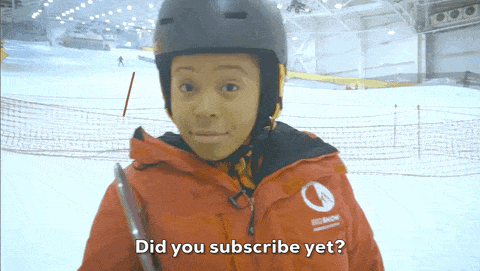
Honesty is still the best policy, so let YouTubers disclose when sponsorships exist. Try to make it clear when things are real or staged, too. If a video goes viral, this can help prevent misunderstandings that could cause a backlash against your company.
You can add credits, name actors, and otherwise clarify things to ward off issues.
Finally, don’t be afraid to talk to the YouTuber and get their input on how they think a specific sponsorship will work for their audience. They usually know their fans well, and taking their advice is often the best way to get a great return on your investment.
What works for one channel won’t always work for another.
Now that you know more about how to collaborate with YouTubers and promote your brand successfully, it’s time to put things into practice. Make sure to review YouTube’s guides and policies for promotions to ensure that the advertising you make fits with their guidelines.
Head of Content
After bouncing around tech start-ups and university literature programs, Joe has finally settled down as Billo’s Head of Content. Joe now spends his days writing ads about ads, teaching clients how to craft killer content, and combing through our web copy with a bold red Sharpie.

Authentic creator videos, powered by real performance data
22,000+ brands use Billo to turn UGC into high-ROAS video ads.
How to Find Micro Influencers for Your Brand’s...
Looking for micro influencers for your brand’s next campaign? You’re [...]...
Read full articleBeyond the Ad: Influencer Marketing Services for...
Sponsored posts alone won’t cut it in 2025. Global influencer-marketing [...]...
Read full articleTop 20 TikTok Influencers for 2025
Having rapidly evolved from a short-form video app predominantly used [...]...
Read full article

